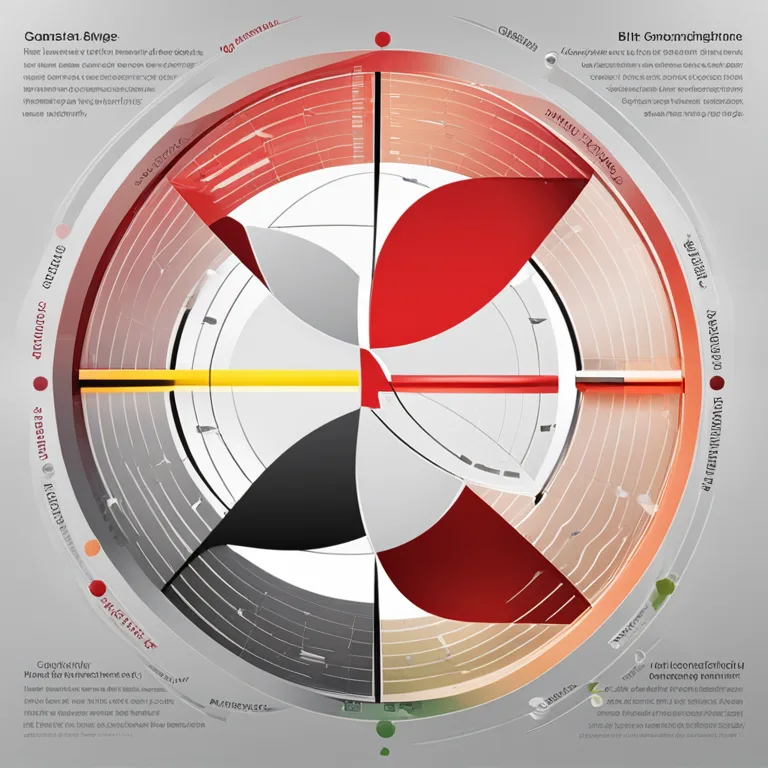
The Rhythms of Life: An Introduction to Biorhythms
Delve into the concept of biorhythms to understand the cyclical nature of human life and its potential impact on personal well-being.
article by Adrian Wallace
What Are Biorhythms?
In the realm of holistic wellness, the concept of biorhythms presents a fascinating perspective on predicting and understanding human conditions. Biorhythms are said to be natural cycles that govern various physical, emotional, and intellectual faculties. The theory posits that from the moment of birth, these cycles influence our day-to-day experiences and capabilities. Each cycle has a set duration: the physical cycle lasts 23 days, the emotional is 28 days, synonymous with the lunar month, and the intellectual cycle spans 33 days. Tracking these cycles can ostensibly provide insights into our personal patterns and optimal timing for specific activities.

Historical Roots of Biorhythms
The idea of biorhythms dates back to the 19th century but garnered attention in the 1970s when it became part of the New Age movement. The concept rests on the premise pioneered by Dr. Wilhelm Fliess, a German doctor, and contemporary of Sigmund Freud. It was further developed by Hermann Swoboda, a psychology professor, who noticed coinciding rhythms in his life and studies. Although biorhythms are not universally accepted in the scientific community, proponents argue that these cycles can be used as a personal empowerment tool, allowing individuals to harness their peaks and troughs effectively.

Biorhythms in the Modern Age
As we move deeper into 2024 and beyond, the fascination with biorhythms has seen a resurgence, especially in the circles keen on personal development and self-care. In an age where digital technology can personalize experiences like never before, biorhythm calculators and mobile applications have emerged. These tools claim to chart one's biorhythms easily, providing users with daily readings that hint at their physical, emotional, and intellectual states.

Applying Biorhythms to Daily Life
While the scientific community remains skeptical, many people turn to biorhythms for personal insights. Adherents believe that by understanding and anticipating their cycles, they can better plan activities, from professional to athletic endeavors, and even interpersonal relationships. For instance, it's suggested that engaging in demanding physical activities might be more beneficial when one is in a high phase of the physical cycle, while introspective or strategic tasks might be better suited to high points of the intellectual cycle.

Criticisms and Considerations
Despite growing interest, criticism of biorhythms persists. The main contention is the lack of empirical evidence to support the theory's predictions. Additionally, skeptics question the methodology used in calculating the cycles, pointing out that they may be arbitrary. Rather than dismissing the concept outright, however, individuals exploring biorhythms are encouraged to approach them as one of several tools for self-reflection and personal growth, rather than a definitive guide to life's complexities.
Embracing Biorhythms Responsibly
For those who wish to incorporate biorhythms into their lives, it is important to do so thoughtfully. As with any belief system that intersects with wellness, it’s essential to use biorhythms in conjunction with professional advice and personal judgment. Keeping an open mind while being critical of the sources and understanding the distinction between belief and scientific fact is key to responsibly engaging with biorhythms.
Published: 12/28/2023
Modified: 12/28/2023
More predictions
Come back here soon to learn more about yourself and your future


Biorhythm Horoscope: Syncing Life with Biological Cycles
Discover how biorhythm horoscopes align with your life's natural rhythms for personal insight and forecasting.


The Emotional Wave of Biorhythms: Riding the Inner Flux
Discover the science behind emotional biorhythms and learn how tracking this natural cycle can help improve your daily life and relationships.


Biorhythms and Fortune: Maximizing Your Lucky Days
Discover how understanding your personal biorhythms can help you increase your chances of experiencing lucky moments and serendipity in day-to-day life.